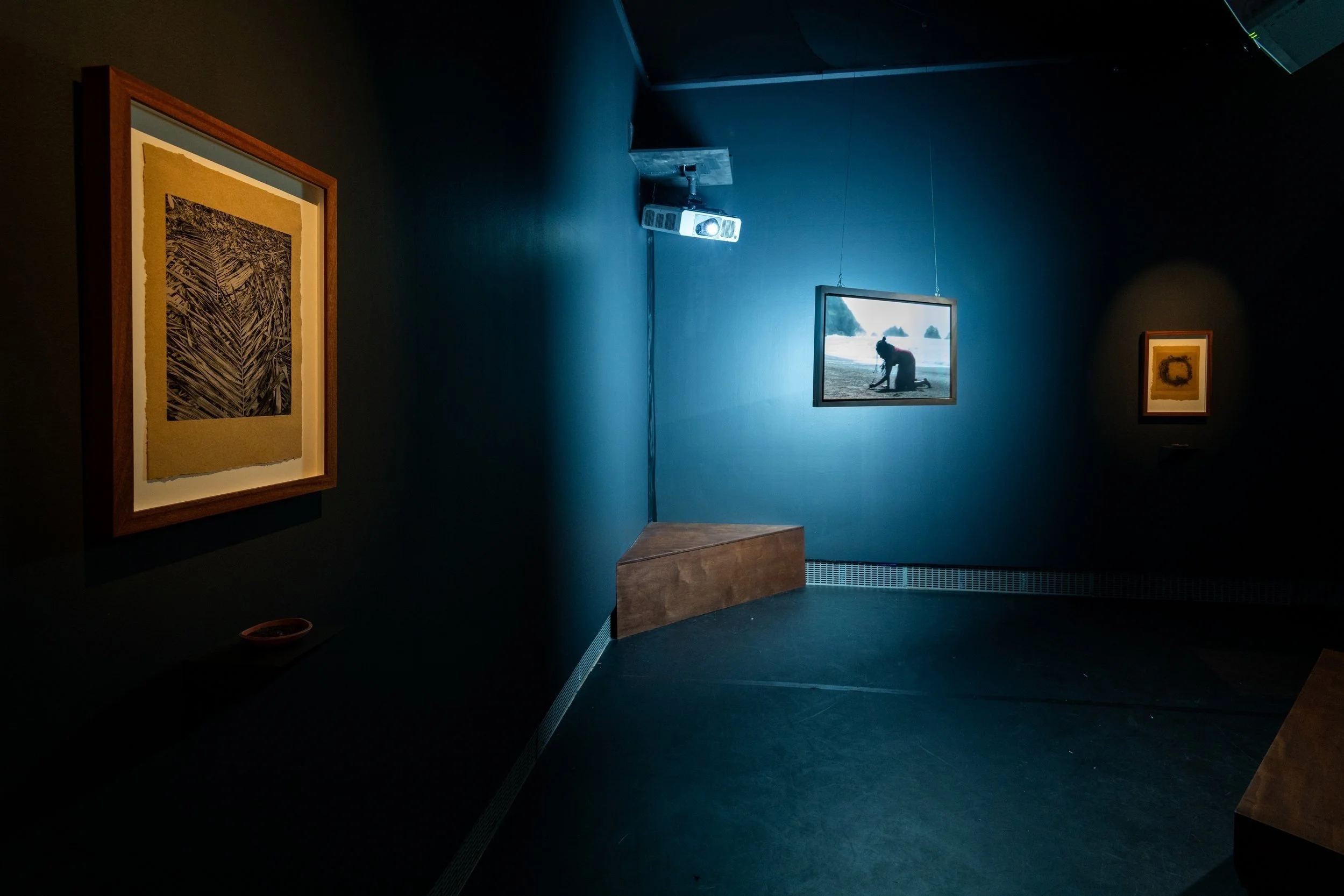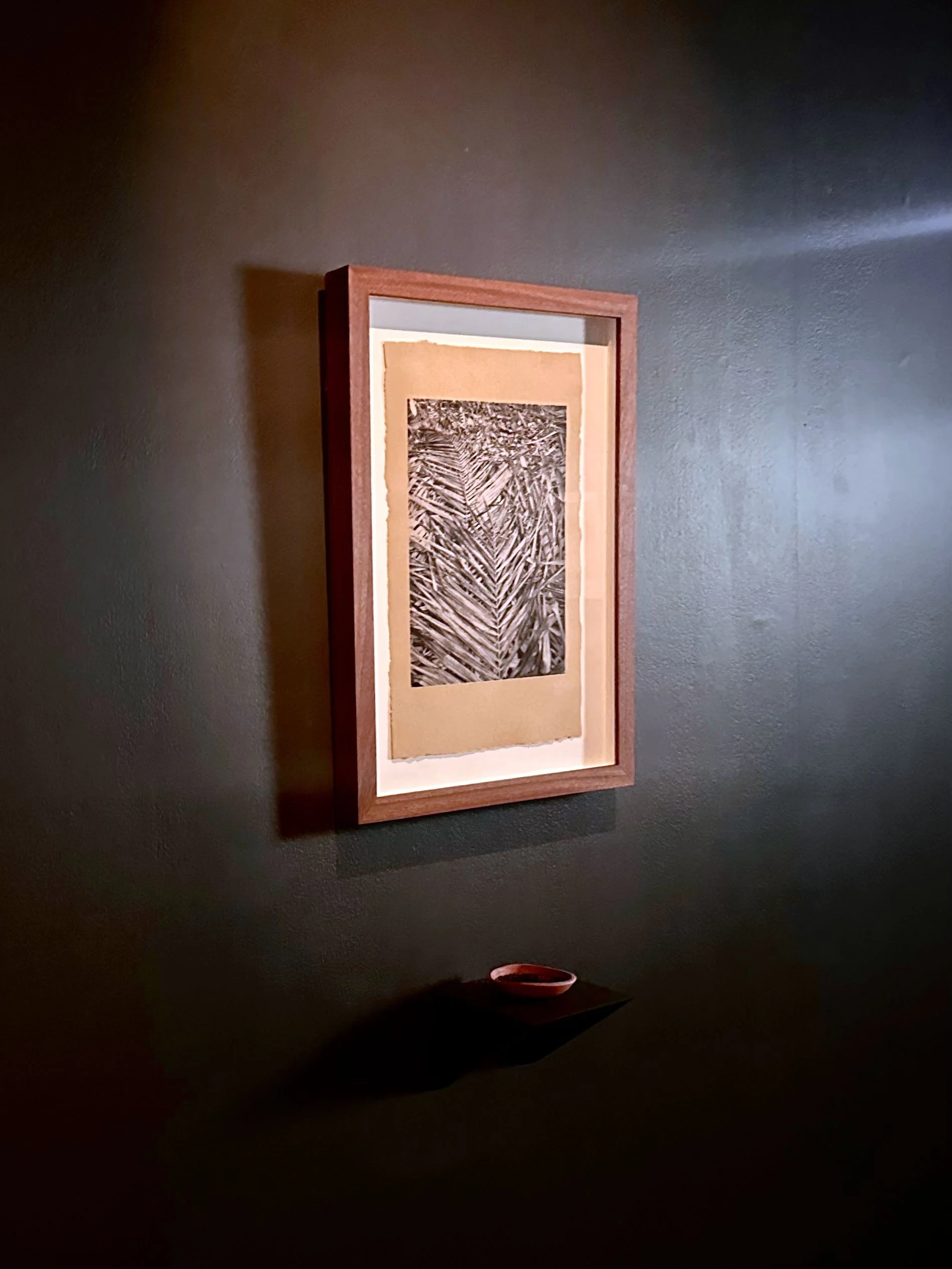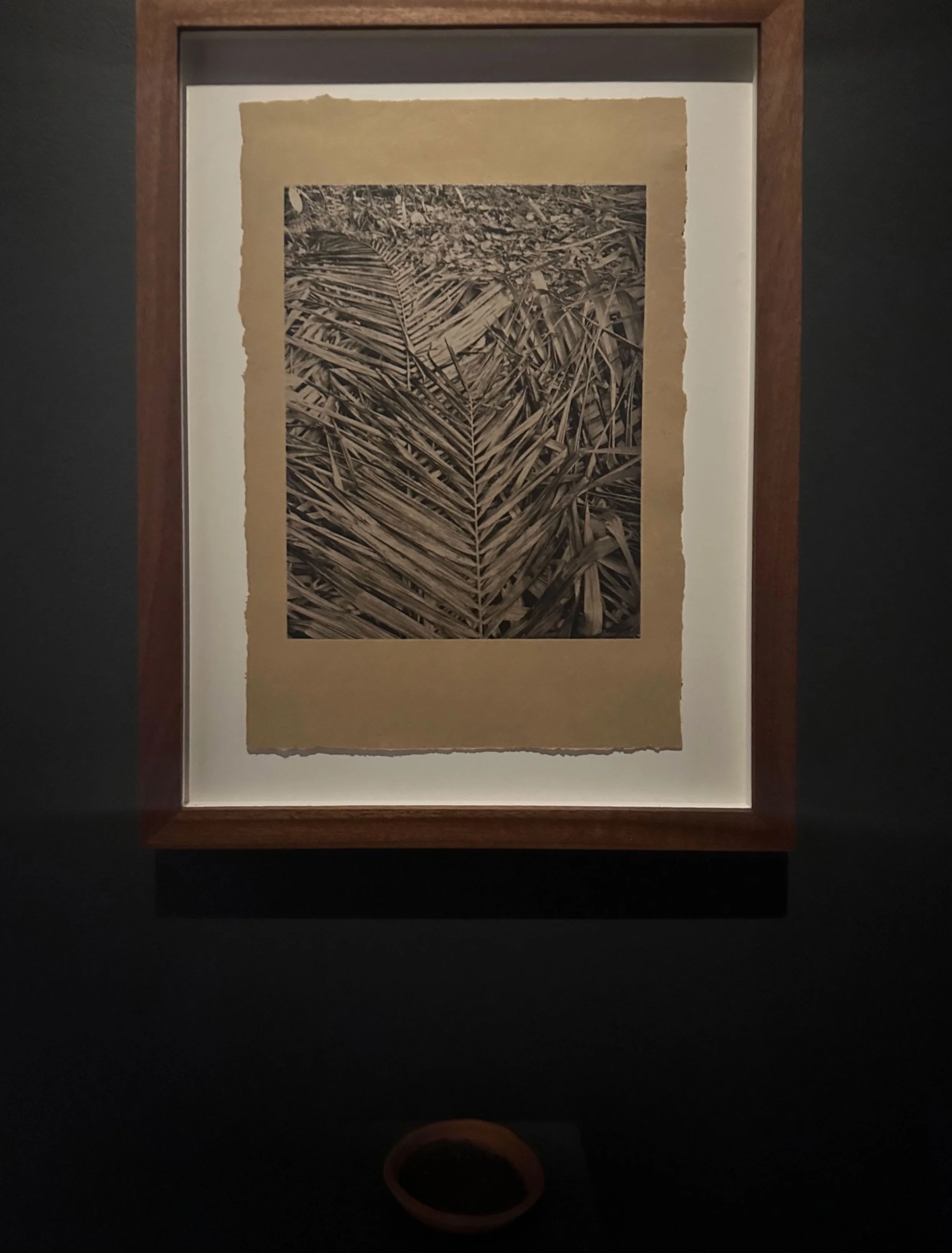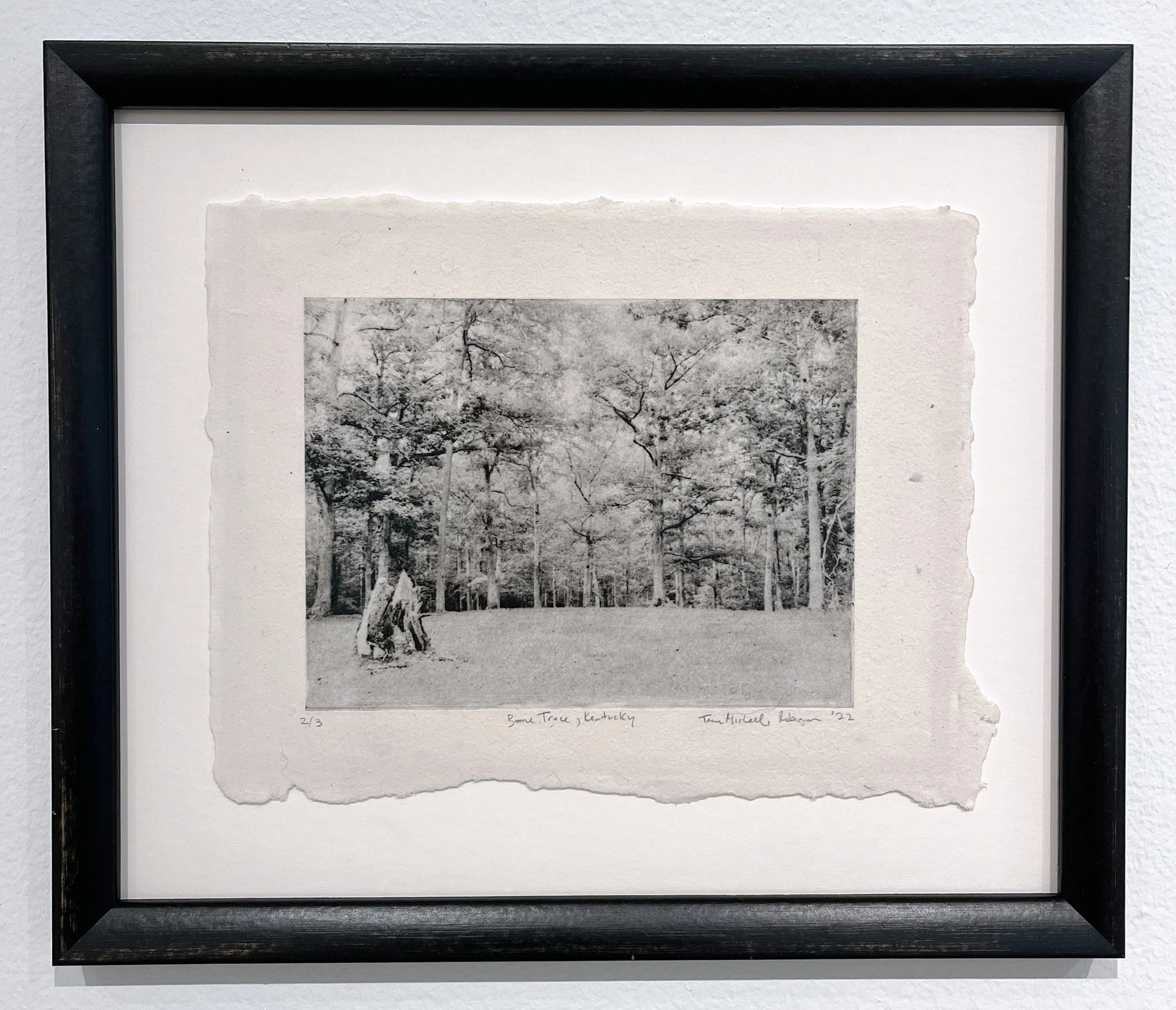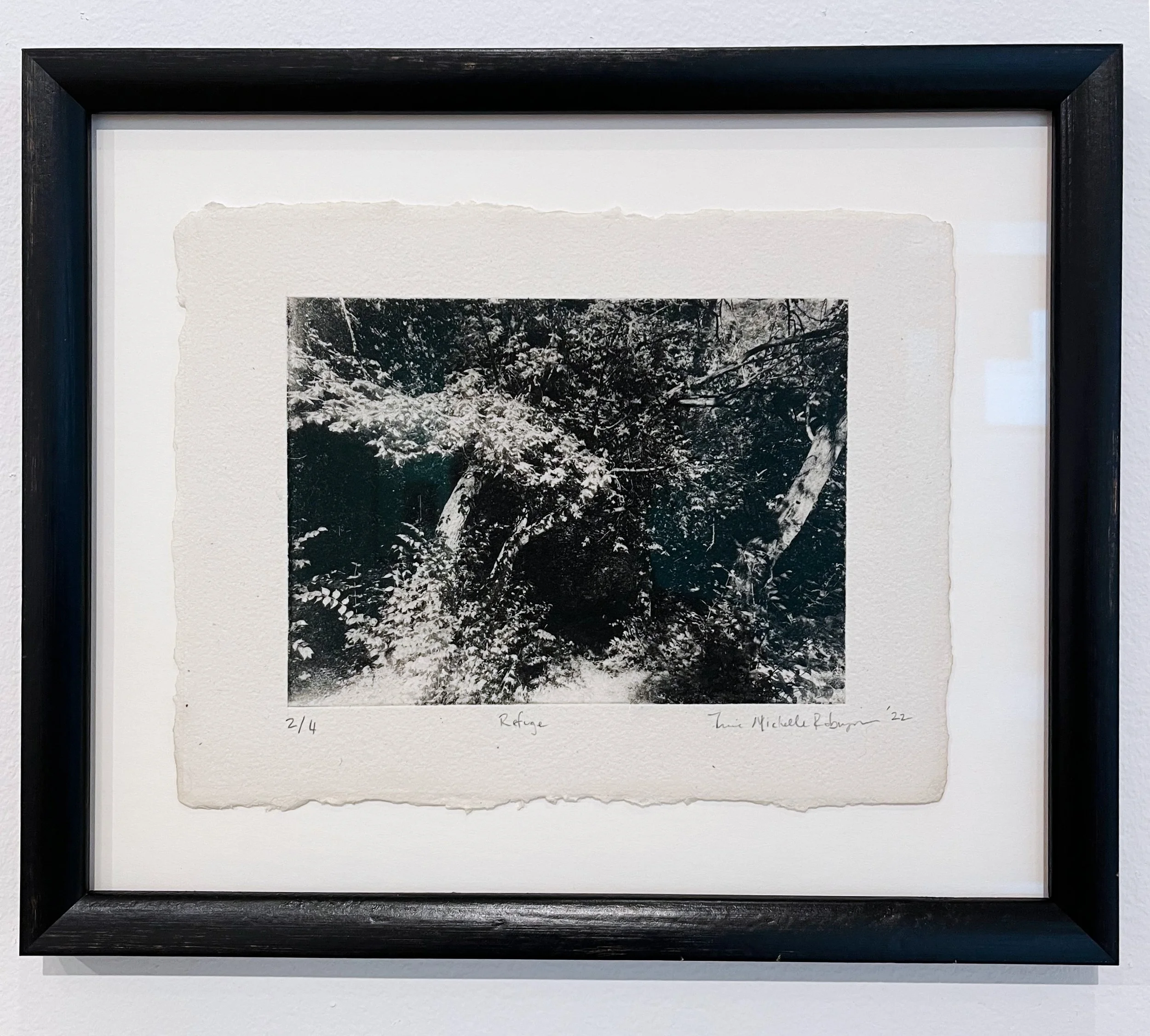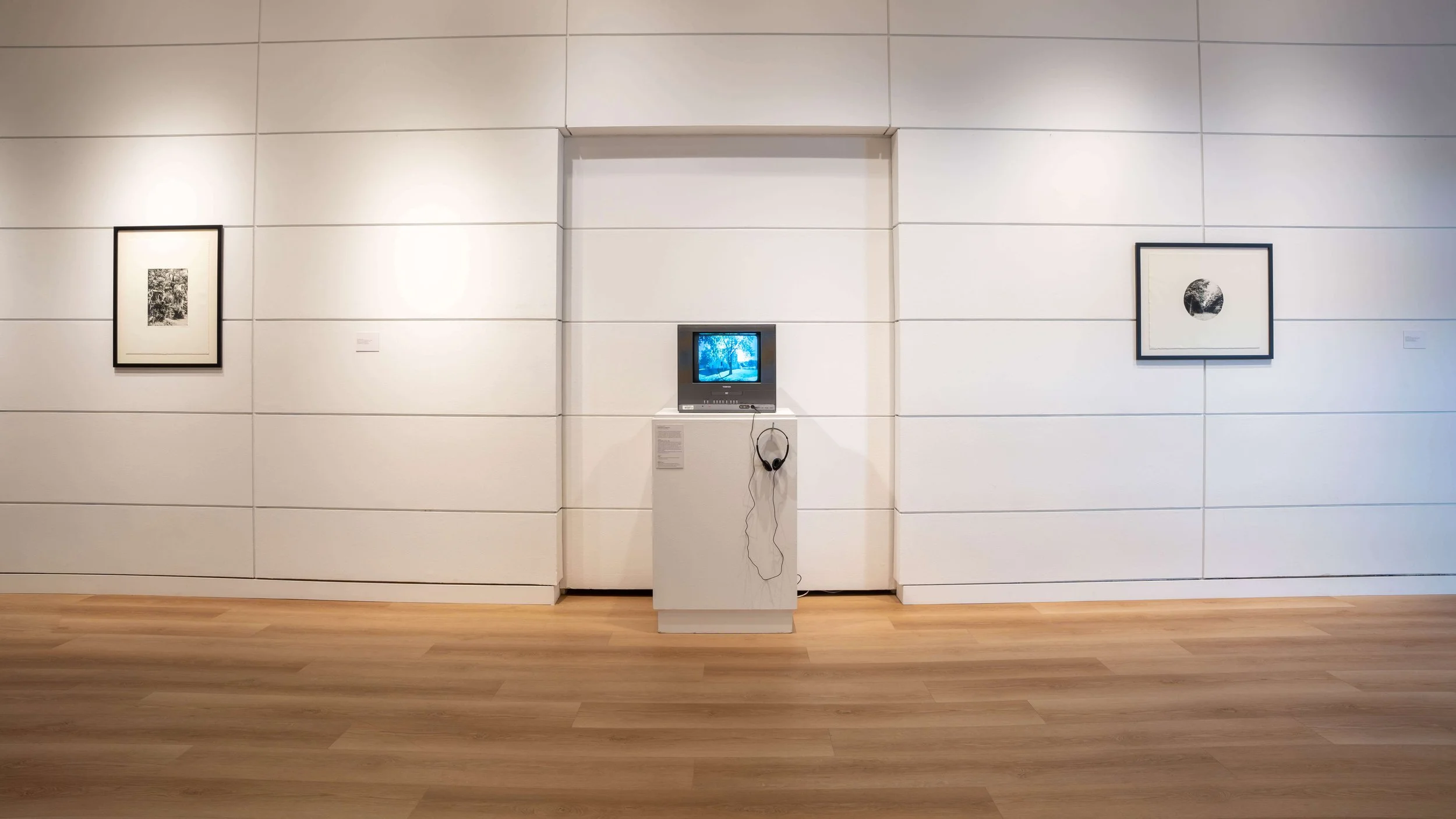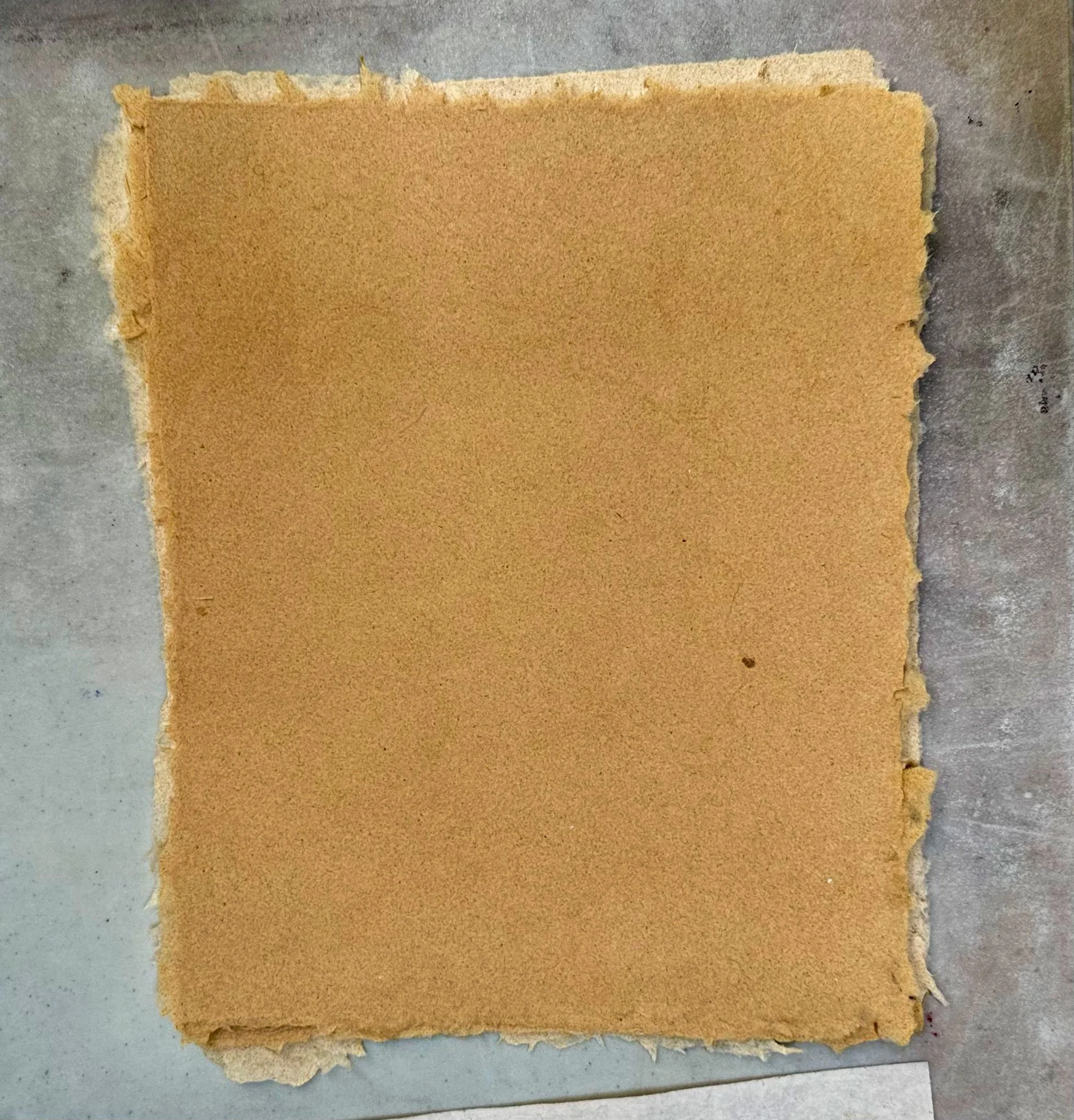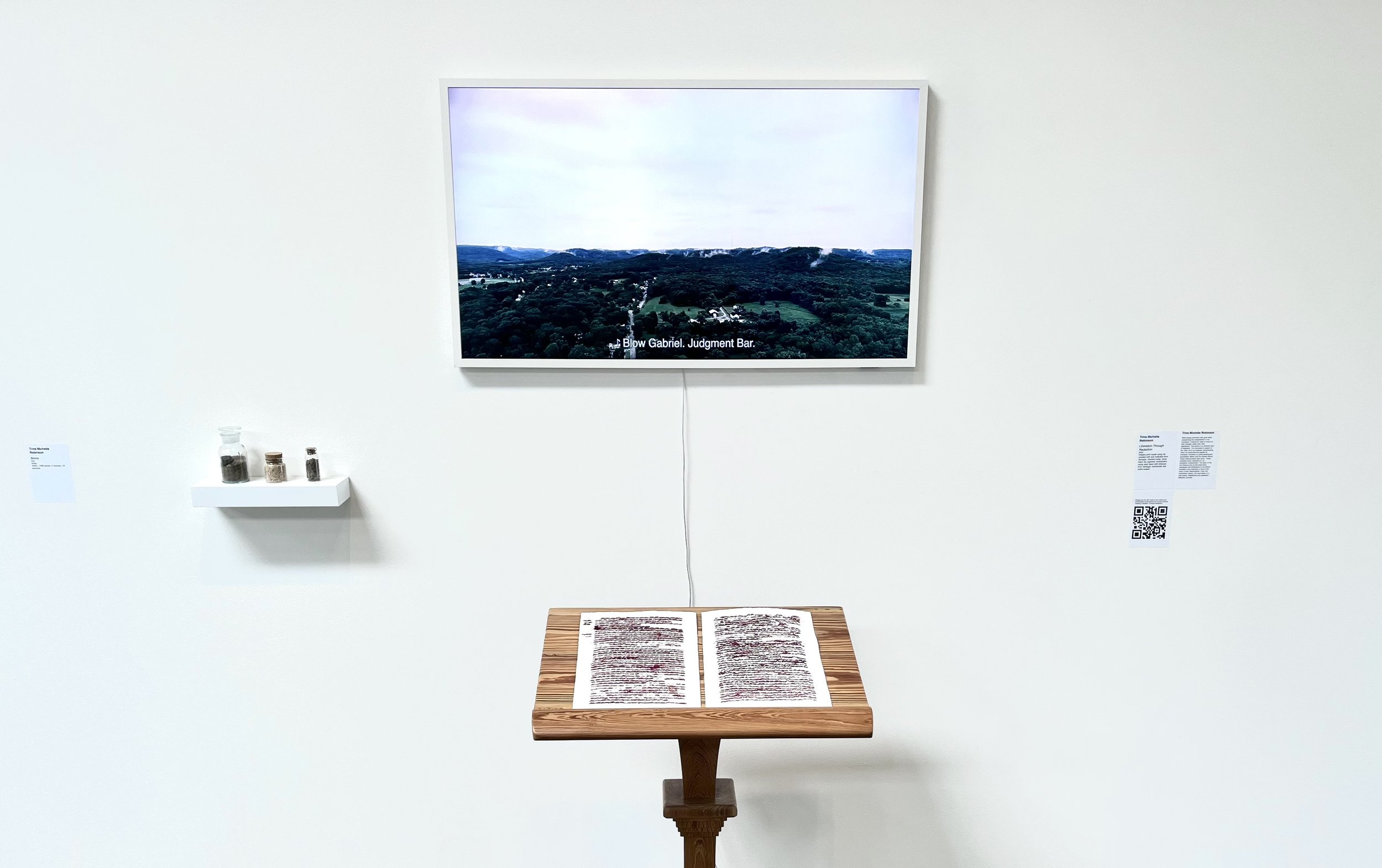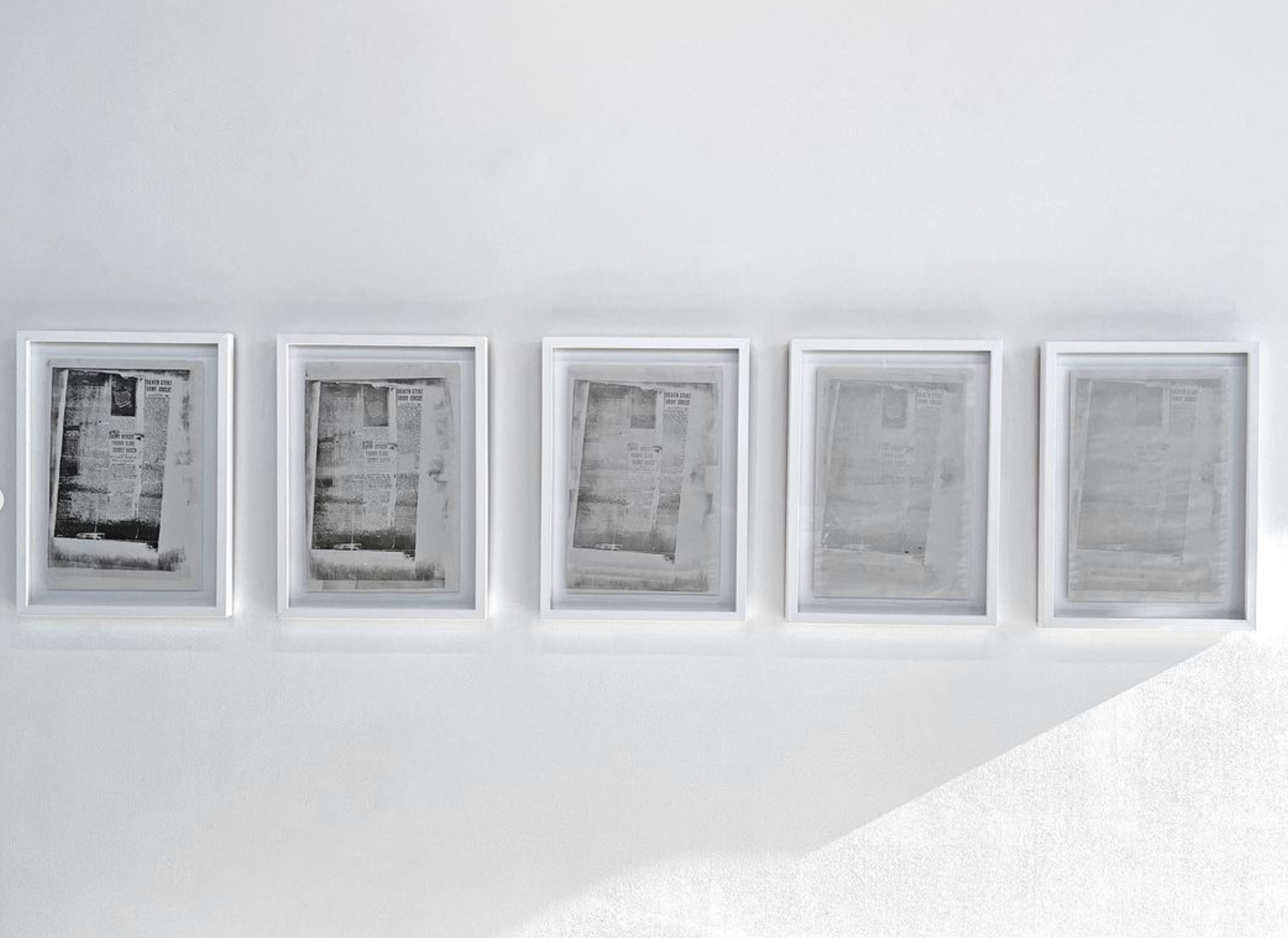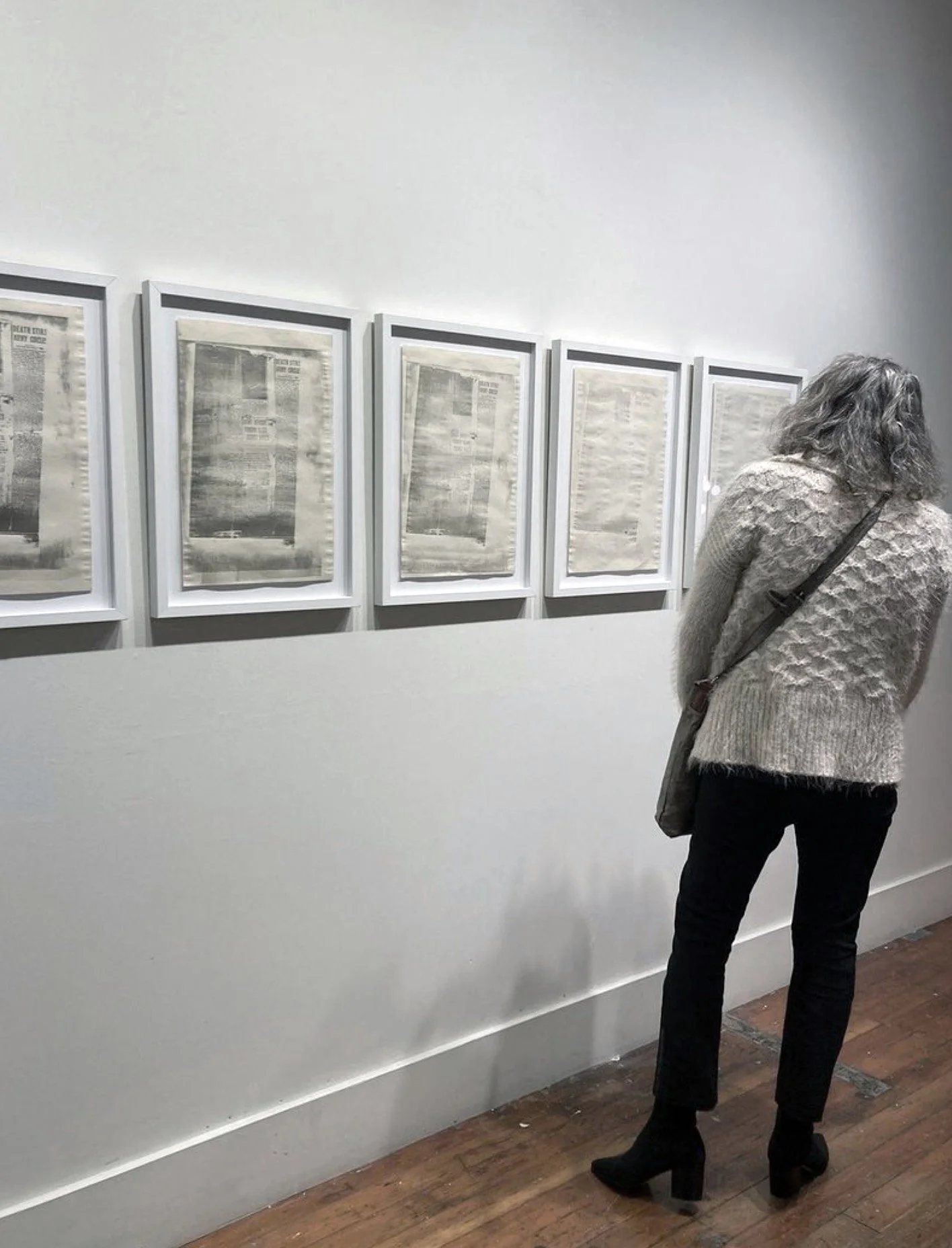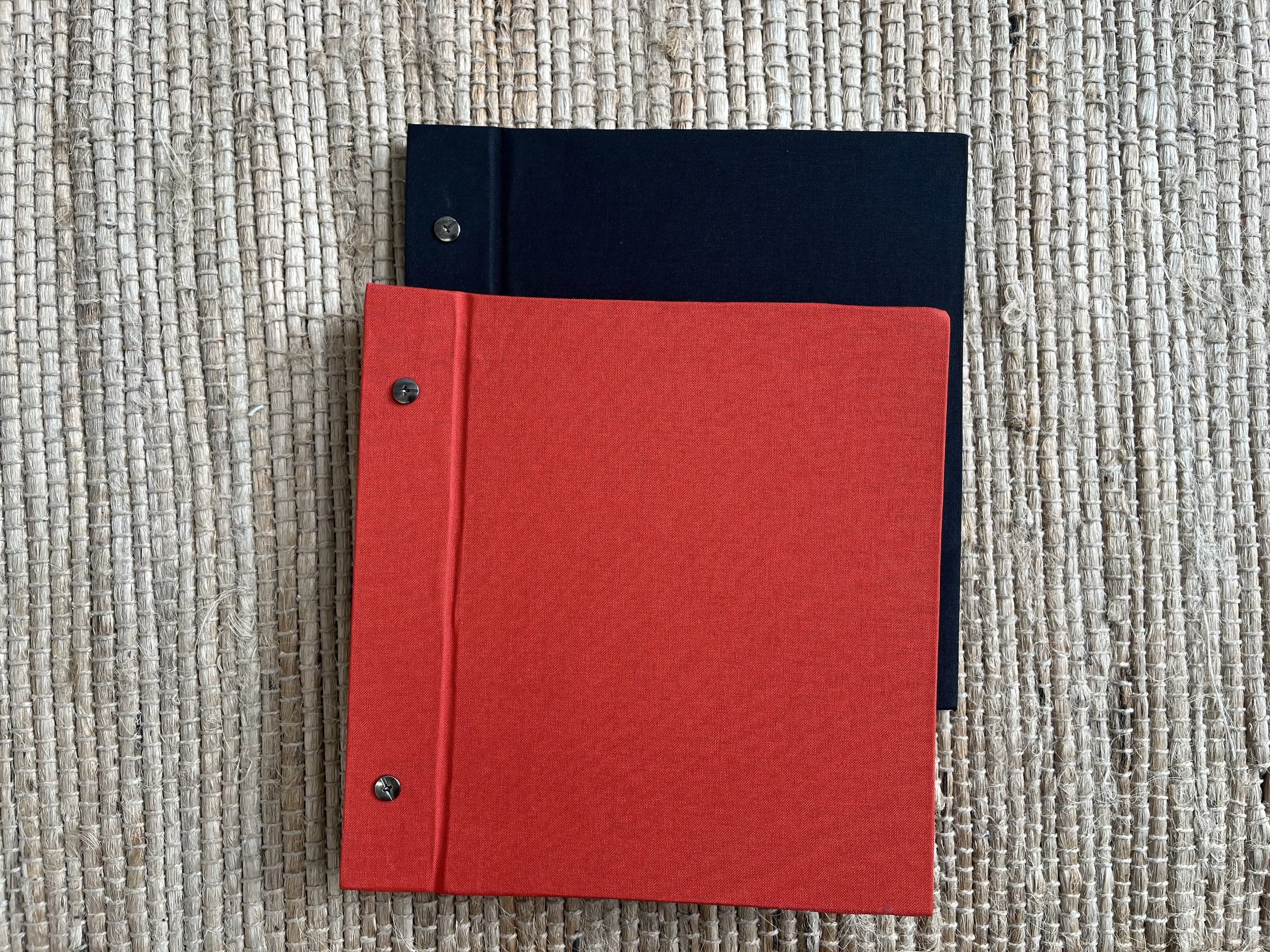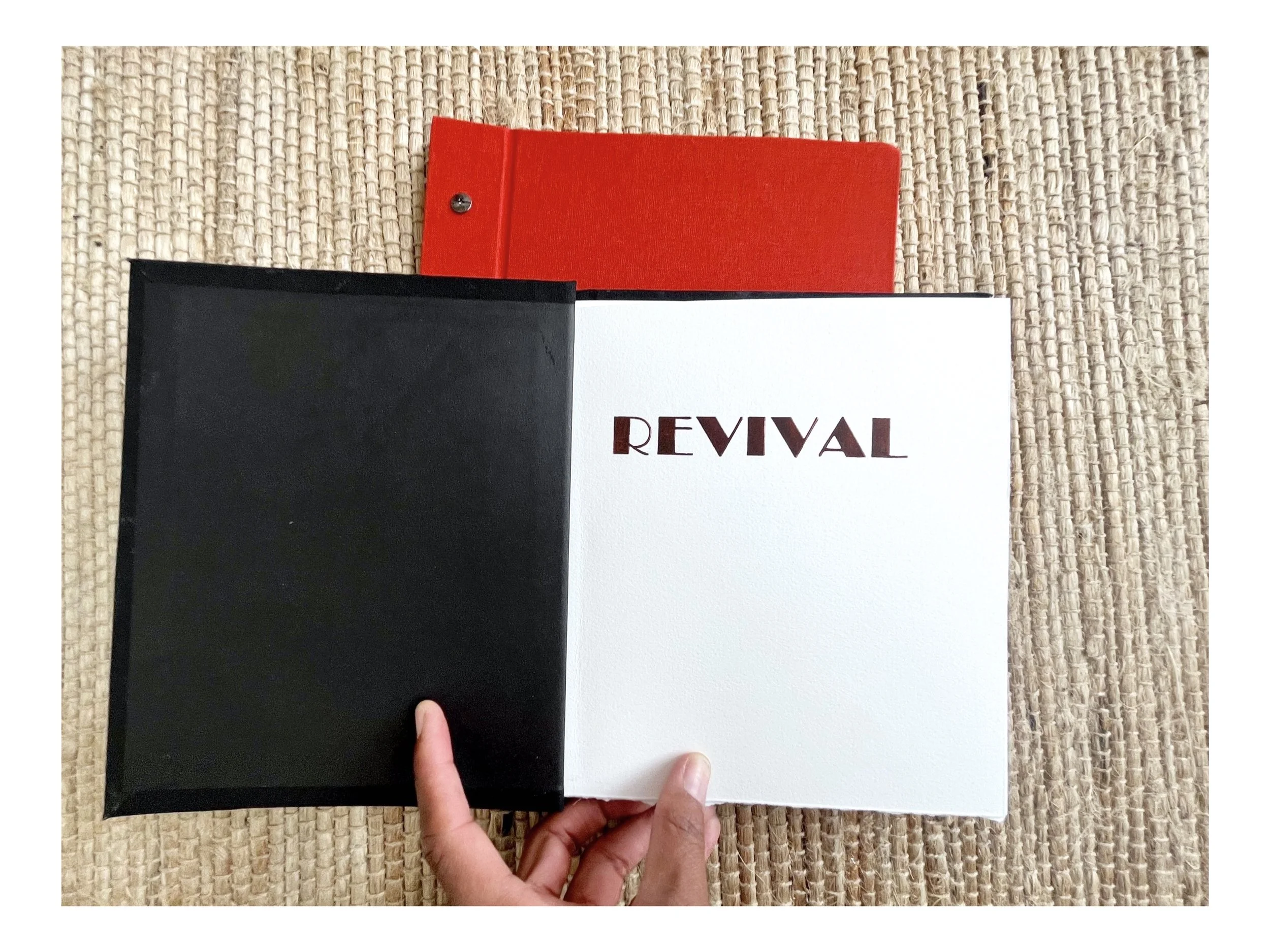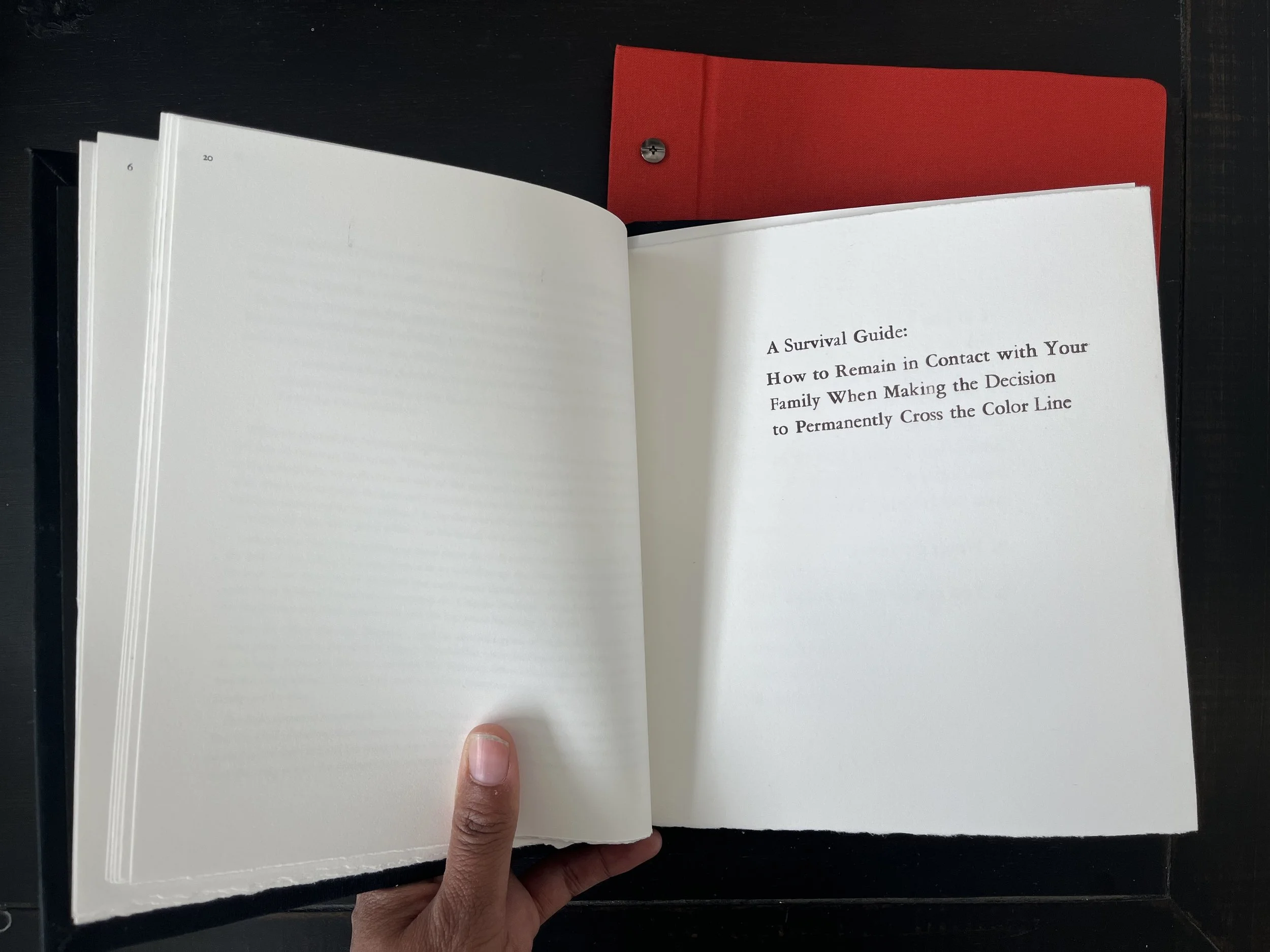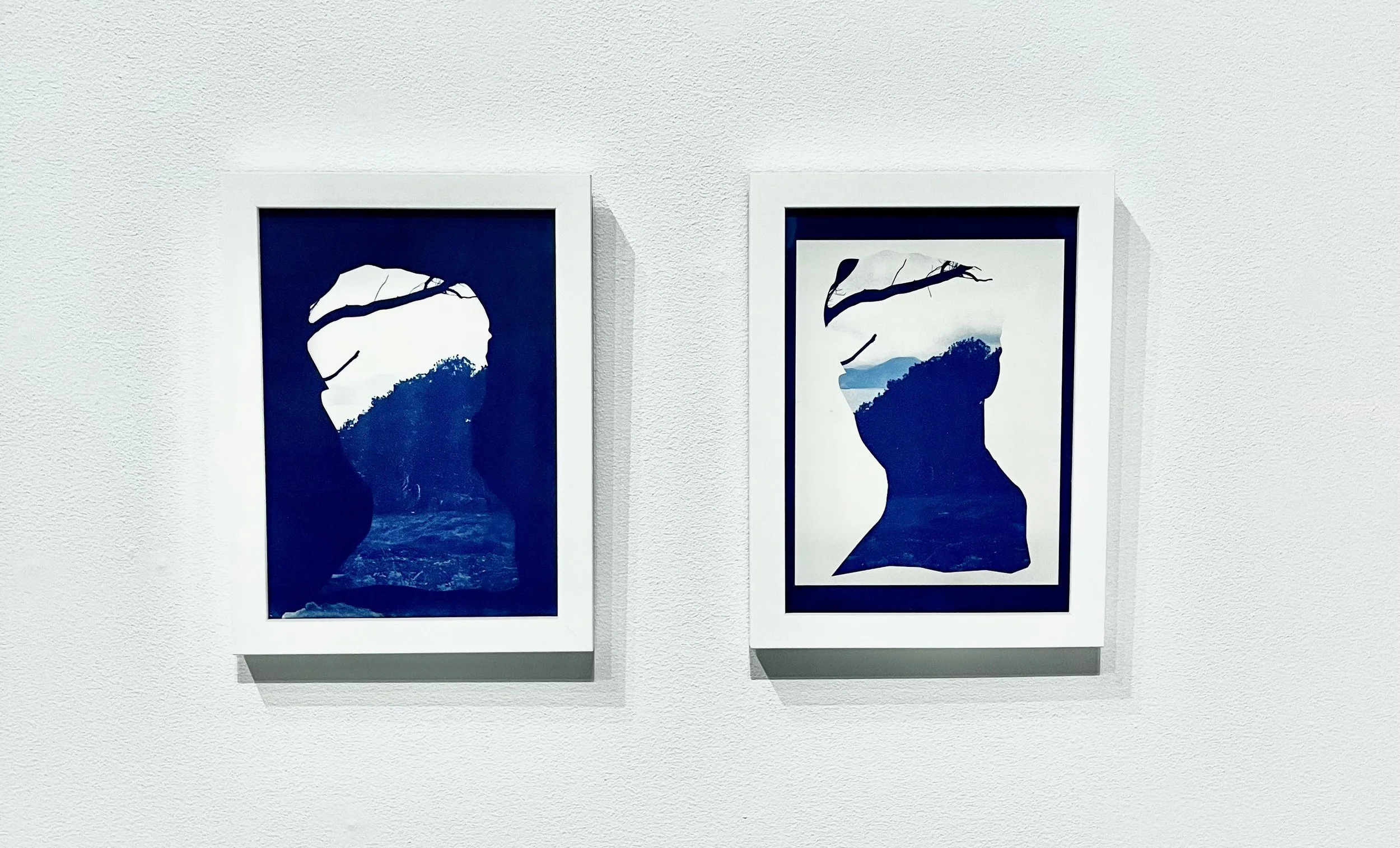Etchings
I am drawn to the etching process because I think it’s the ideal way to use an art form to recall and imprint lost memories. The etching processes I use is to create and print images are intentionally ethereal to be in conversation with memory rather than a direct copy. When making these etchings I am trying to fill in the gaps and study the fragments of memory. I depend on techniques like this to remind me, that though it is not possible to see exactly what my ancestors have seen, I can maybe catch a glimpse and experience life the way they might have.
Copper Photogravures
ALSO IN BAY AREA NOW 9
.
Crown, 2023
Copper photogravure and chine collé printed on gampi mounted on handmade paper made from raffia palm from Cameroon made by the artist, African Sapele wood
Printed by Moonlight Press
Palms (The Way), 2023
Copper photogravure and chine collé printed on gampi mounted on handmade paper made from raffia palm from Cameroon made by the artist, African Sapele wood
Printed by Moonlight Press
PhotoPolymer Intaglio
The photopolymer intaglio process I use is to create and print images are intentionally ethereal to be in conversation with memory rather than a direct copy. When making these etchings I am trying to fill in the gaps and study the fragments of memory. I depend on techniques like this to remind me, that though it is not possible to see exactly what my ancestors have seen, I can maybe catch a glimpse and experience life the way they might have.
On the right are installation images of Boone Trace (top) and Refuge (bottom) from the solo exhibition Excavation: Past, Present and Future at the Museum of the African Diaspora (MoAD) in San Francisco in 2022. Both of these images were printed on my handmade paper made from raw cotton paper sourced from a Black-owned farm in North Carolina.
Curatorial statement from Excavation: Past, Present and Future at the Museum of the African Diaspora (MoAD):
Experimenting with early photography, installation, and film, this exhibition invites you to consider the intimate relationship between memory, materiality, and migration.
Inspired by Paul Virilio's The Vision Machine, we may consider the process of image-making as a suggestive practice that evokes a fleeting impression of a time or place. Virillio writes, “the main aim of the heliographic plate is to capture signals transmitted by the alternation of light and shade, day and night, good weather and bad.”
Multimedia artist, Trina Michelle Robinson, combines digital and sculptural practices to interrogate her personal archive and evoke an intimate sense of being with a moment. As a deeply process-driven artist, Robinson considers the sensory and textural significance behind her mediums and calls upon the place from which her materials are sourced. Robinson places special importance on recreating many of the objects that might have once been touched by her ancestors.
For this exhibition, Robinson has included intaglio prints related to her ancestors' forced migration from West Africa, their survival during enslavement in Kentucky, and eventual migration north and west. Robinson further draws on the spiritual tradition of altar-building to create a multimedia installation that provides access into her devotional practice. The paper, made from raw cotton, the terracotta clay of a bowl, and the locally sourced wax of a candle all support Robinson’s exploration of self across time.
Welcoming, St. Helena Island, SC, 2022
Papermaking & Print
Handmade Paper
Raw Cotton Paper
The raw cotton handmade paper I create for print projects is sourced from a Black owned farm in North Carolina. The labor intensive process includes me removing the cotton fiber from the bolls by hand, then cooking it to prepare it for the beating process. (You can see documentation of my papermaking process here.)
Using this material is an act to reclaim the material because the brother of my great grandfather owned a farm that also grew cotton in the late 1800s. He worked with the material to prosper and moved away from the narrative of trauma when discussing this material.
Raw Raffia Palm Paper
In March 2023 I traveled to Cameroon and purchased about 30 bundles of raw raffia palm paper to make paper with.
I use this material to connect to my West African roots and the “before”. Before America was even an idea. Before my ancestors came to this place.
PHOTOPOLYMER INTAGLIO And Handmade paper
Liberation Through Redaction, 2022
Photopolymer intaglio print, ink made with soil collected from Senegal, charred cedar, bone black dry pigment, sisal dyed with hibiscus from Senegal, raw cotton paper sourced from a Black-owned farm in North Carolina
“The history of blackness is testament to the fact that objects can and do resist. Blackness—
the extended movement of a specific upheaval, an ongoing irruption that rearranges every line—is a strain that pressures the assumption of the equivalence of personhood and subjectivity.” - Fred Moten
While being overcome with grief while deep into the research of the enslavement of my ancestors, I looked for ways to focus on their strength rather than their oppression. This piece is an intimate look at liberation. Through the staining of the hibiscus flower dye, the sisal takes on a wild nature through the tears in the fiber, heightening the redaction/liberation process. A pattern or code built on upheaval is the result.
Seen in the third image is the name of my great-great-great grandfather Martin written in the will of the person who enslaved him mentioning when he will be freed. Using my my handmade paper printed on raw cotton from a black owned farm, hibiscus flower dyed sisal, all sourced from Africa, and ink made from the soil I collected in Senegal, I’ve redacted every word that does focus on my ancestors humanity to take control of the narrative so all that is left in this section is “the man … Martin … free”.
Read more about this piece.
RELIEF PRINT
Installation image from the 35th Annual Barclay Simpson MFA Award Exhibition at California College of the Arts, February 2022.
Ghost Prints of Loss, 2022
10in x14in
Relief prints on newsprint, ink made from soil collected in Casamance, Senegal, charred cedar from a border crossing between Senegal and The Gambia, bone black dry pigment, etching transparent base
Installation image from the exhibiton you can hear the wind from beneath the floorboards at Root Division, December 2022.
A relief series of a reprinted January 2, 1932 newspaper article from the African-American newspaper Chicago Defender which was found by my family in a lost photo album after being misplaced for about 50 years. Because I’ve only had access to a distorted photocopy of the recovered original, I decided to create my own. The newspaper article details the mysterious story of Lieutenant William J. French, my great-great-uncle, whose life disappeared from my family narrative following his death in 1932. The handmade ink used is made from charred cedar and soil from Senegal, near the border of The Gambia that I collected while traveling to trace my ancestry. The darker prints also include the addition of dry bone black pigment. The creation of this series of relief prints is the result of my efforts to render my damaged copy a precious personal artifact.
“Ghost print” is a printmaking term when prints made after the original pressing where most of the ink is removed from the plate.
Artist BOOK - Memory Index
Work-in-progress artist book that will be printed using my handmade paper made from raw cotton. The book will also feature photopolymer intaglio and letterpress prints.
This photo album contains the lost memories of a family.
This is a recreation of a family photo album that was misplaced for over 50 years and rediscovered in the late 1990s in the attic of a home of the South Side of Chicago. The original album held family secrets because its discovery opened the door to the long lost details of my family's lives, including their migration to Chicago from Kentucky in the 1860s, generations of enslavement and the crossing of color lines.
The original album contained dozens of long lost family photos from the 1930-40s, in addition to Chicago Defender newspaper clippings from the 1930s.
The recreated album, made with recycled leather-bound front and back covers, contains pages of cyanotypes, plus reproductions and manipulations of original 18th, 19th, and 20th century manuscripts and images telling the stories of the forgotten.
The images below are of the perfect bound version of the album.
Handmade artist book Revival that includes several letterpress pages. (This version is a prototype and an updated version is coming soon.)
Alternative Photography
Installation image from the SFAC Main Gallery 2021 exhibition Taking Place: Untold Stories of the City
Presidio Study I
10” x 14”
Cyanotype on Arches
Presidio Study II
10” x 14”
Cyanotype on Arches
Cyanotype portraits of my great-great Uncle William J. French and the Presidio in San Francisco. I would like to believe that William is my partner in my search for details of my ancestry. I first learned about him in a January 8, 1932 Chicago Defender newspaper article about him that not only revealed that he was passing for white, it also unearthed numbers details that were absent from my family narrative. I feel we are working together to repair what was lost and he is also attempting to make up for the difficult choices he was forced to make.

